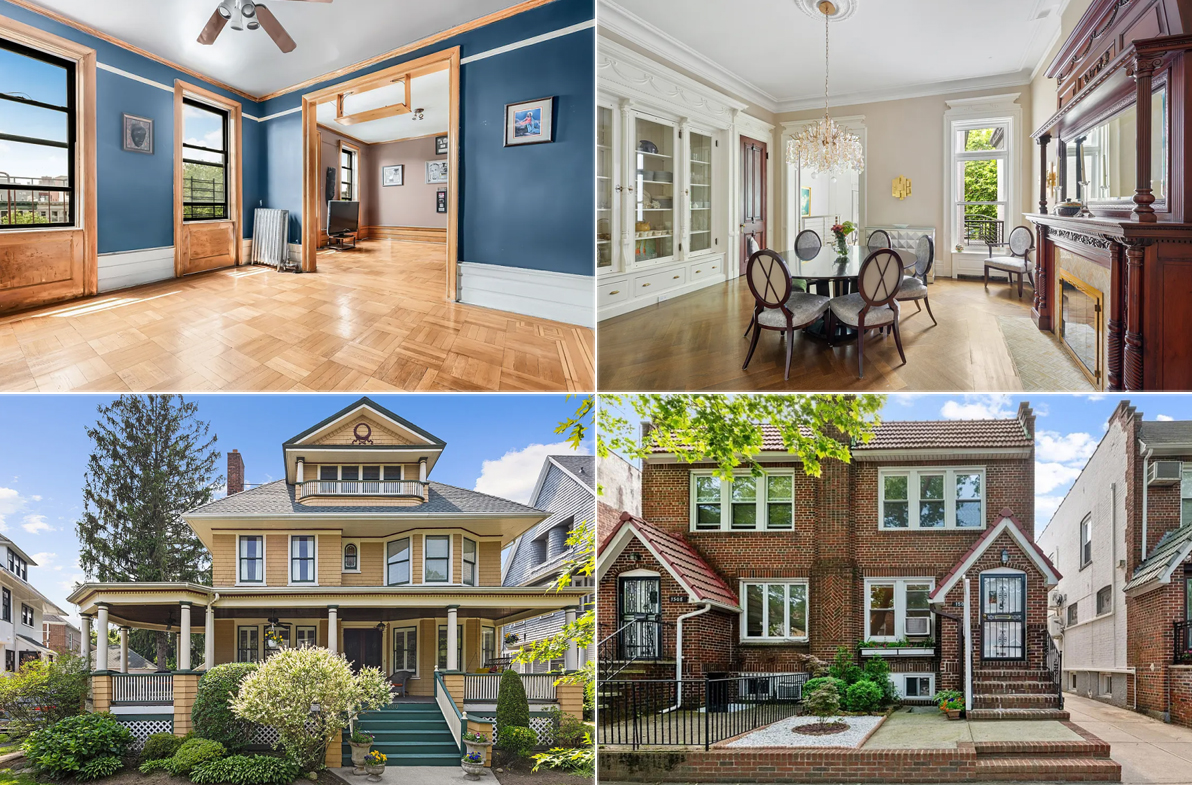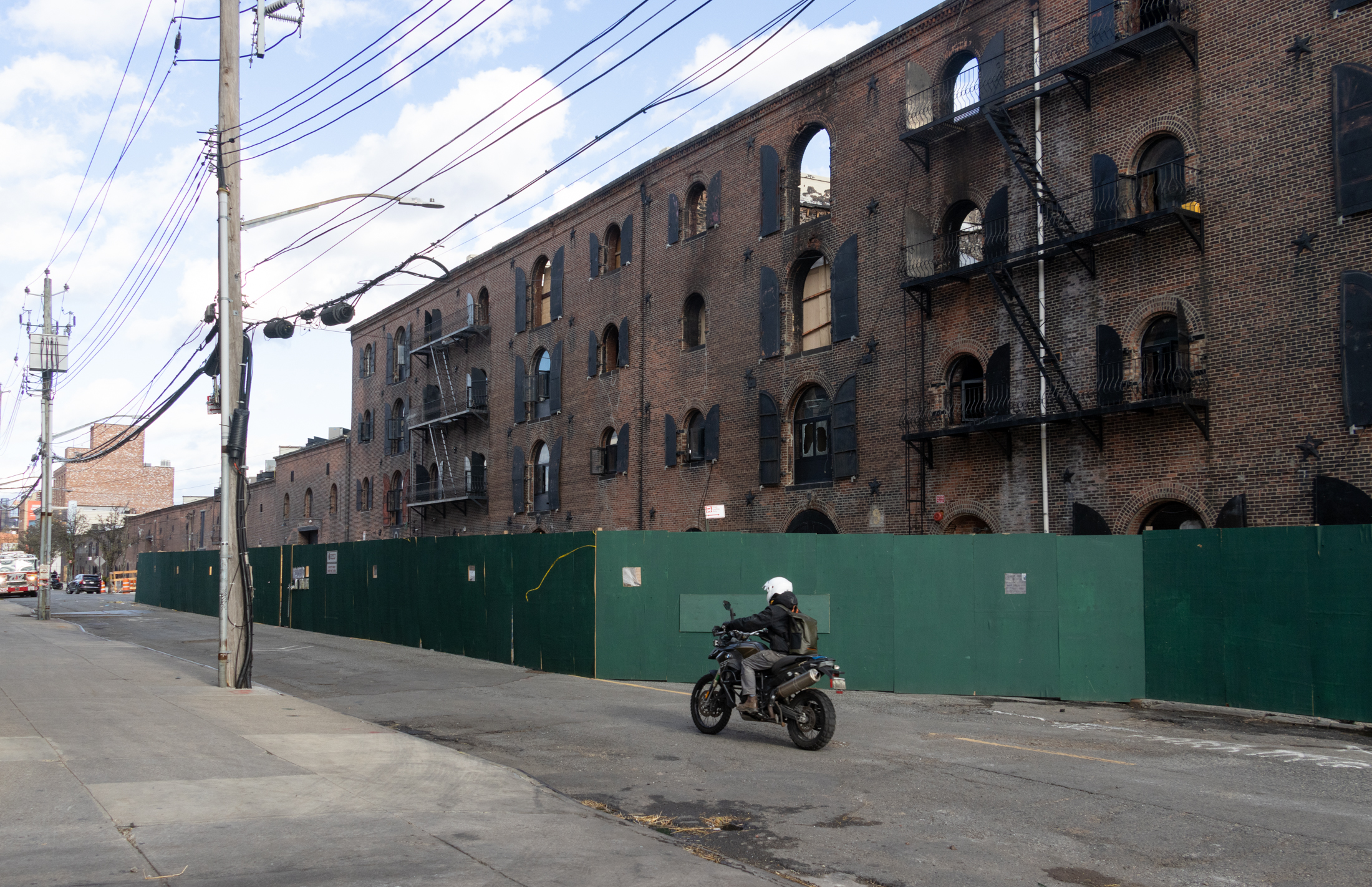Weekender: The Green Church Bites the Dust
[nggallery id=”25544″ template=galleryview] Sad. Sad. Sad. And to think that the pastor was the one who sold the church out. Last Days of the Green Church [Flickr via GL] On to the Afterlife for Green Church [Brownstoner] Photos courtesy of Joe Marino
[nggallery id=”25544″ template=galleryview]
Sad. Sad. Sad. And to think that the pastor was the one who sold the church out.
Last Days of the Green Church [Flickr via GL]
On to the Afterlife for Green Church [Brownstoner]
Photos courtesy of Joe Marino





Not to sound insensitive… but I am. The demolition of this old church is only half as disturbing as “I just spent the last 10 minutes crying looking at the one.” You seriously have to take a breather if this event causes you to break down.
Buildings are razed all the time. Sometimes for good reason (like this instance) and other times just ‘cuz. Is it because it’s a church? Or just because it’s an old building. The beautiful old buildings that were demolished all over the city to make room for bigger ones… especially after the advent of the elevator and steel skeletons. I guess there were folks collapsed on the sidewalk weeping when they started construction on the Flatiron Bldg and the Chrysler Bldg. That seems reasonable.
I dunno… I’m just less than sympathetic about these statements of drama and deep emotion about a building.
All buildings have the potential of being destroyed because of myriad circumstances. Why didn’t the community have this building protected by the city years and years ago? What about the church on the next block… I’m assuming there is a preservationist organization with a few million in the bank ready to purchase it if something goes wrong with that congregation??
there’s enough churches in this city
There are lots of mistakes made in the destruction of attractive, historical buildings. I have no doubt that there are many who would have wished for a more sensitive response to the competing needs/wishes of the church members and those of some community members. But I am not sure at all that you see what I am saying, Pierre, when your response reduces the decision-making process of the Methodist Church members to “purely economic.” You seem to say that “architecture is paramount” and contrast that to “money being paramount” on the part of the church. Do you really believe that? What of the social programs, the youth groups, the increased evangelistic opportunities which may be allowed by the church no longer being a servant to a building rather than god? You all are fetishizing the building (I know, not an uncommon act on this site!), and dare I say, asking that the church put a false idol (the building) before its needs as a religious community.
In the end, I am sure the church would have gladly sold the building to a preservationist group if they could have received an equal amount of money. And while we may judge that perhaps they should have been willing to accept less money in order to preserve what seems to have been a wonderful asset to the visual landscape. how much less? I hear and understand that those writing here are trying to make the church’s decision as something shameful, since that is the only “weapon” they had in trying to tip the balance in this decision, but it rings hollow to me, especially given the complete lack of reflection or acknowledgment of what a church is. Of course my charge that you all just want to enjoy the benefits of the building without shouldering the financial burden of maintaining it could be applied to all efforts to landmark private property. We have, for better or worse, carved out some additional areas of protection for religious organizations. While I believe the outside can be covered by landmarks (i.e the St Barthalomew (sic) on park Avenue fight), the inside can never be landmarked.
Putnam we see what you are saying but we also understand that from a historical and even architectural stand point this is most likely a huge mistake. As you know very well the over riding theme here from the church and the developers perspective is purely economic and not necessarily one that will advance the community or religious faith. Oh well maybe money is paramount after all…vraiment dommage.
On the blue fence surrounding the site where the church once stood, someone spray painted the word “DI$GRACE” in white spray paint.
If this person who did this had been caught in the act, he would have been charged with vandalism…though the real vandalism can be seen on the other side of the fence.
A building was torn down – not a church. A church is a community of faith. It is my understanding that the community of faith which occupied this building was unable to continue to support the maintenance necessary for the building; they sold the building and drew up plans to continue their ministry and their worship in space to be built within the new development. From an aesthetic viewpoint we (and I) can mourn the loss of the pretty building. But in this country (unlike others) we do not subsidize ecclesiastic buildings. Wandering through Europe one encounters many beautiful empty buildings which once had thriving church communities, but now they are supported by the national treasury and very little faith.
To state, as the original post does, that the pastor sold the church out is simplistic. There are some people who mask commercial enterprises in the guise of a church, maintaining a lavish lifestyle and selling church properties when advantageous to enrich themselves. I don’t believe anyone has accused the pastor of the Green Church (which I believe actually has a name and a denomination, not just a color) or personally profiting from what must have been a very difficult decision. As a member of a now thriving church in the East Village (Middle Collegiate Church [www.middlechurch.org]), I often hear of the time when it was going to be shut down because there were only 23 attendees at services. It survived because it and its fellow churches own much of downtown Manhattan (hyperbole). Most churches are not so fortunate.
If you love a church building, then think about whether or not you are willing to love a church community and support it. If you aren’t (which is okay by me), then don’t expect others to struggle to preserve a pretty building instead of focusing on the mission of the real church – the people.
Whew – guess that preaching has worn off on me!
Yes this is quite painful. I don’t even look.
Nice shots from inside the fence.On the outside I could only see the top of the church slowly going away.
And now just imagine the ugly POS they are going to build to replace it. I hope Brownstoner will give it some coverage.